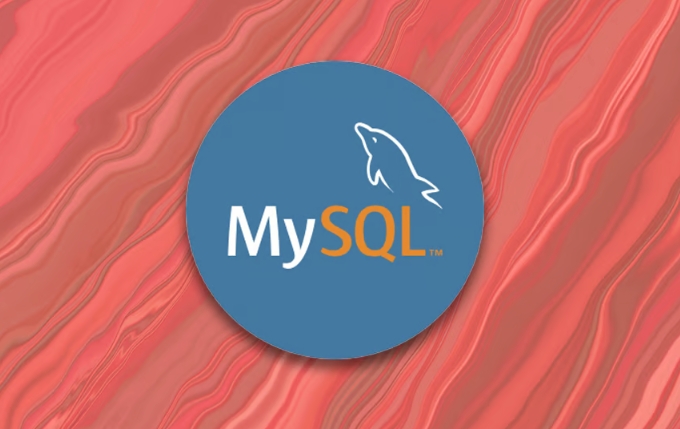Troubleshooting MySQL Schema Drift Issues
MySQL's schema drift problem can be solved by the following methods: 1. Ensure that all changes are submitted to the version control system, and use the migration tool to record the changes; 2. Use the tools to compare structural differences and fix them; 3. Standardize the automated deployment process and add verification steps; 4. Set up a monitoring and alarm mechanism to check changes regularly. Control structure changes through standardized processes and tools.

MySQL's schema drift problem refers to the inconsistency of the structure of the database across different environments (such as development, testing, production), or changes that occur over time. This situation can lead to application errors, data loss, and even service interruptions. The key to solving this type of problem lies in timely discovery and effective control.

Here are some common reasons and coping methods that can help you quickly locate and process schema drift.
1. Check whether the version control is synchronized
Many teams use version control systems (such as Git) to manage changes to database schema. If you find that the table structures are inconsistent between different environments, the first thing you need to check is:

- Are all schema changes submitted to the version control system?
- Are there any manually executed SQL scripts that are not logged?
- Are the latest schema changes synchronized between different branches?
Suggested practices:
- Each schema change must be submitted through the change script, and do not modify it directly in the database.
- Use database migration tools (such as Flyway, Liquibase) to manage schema changes to ensure that every step is recorded and traceable.
2. Comparison of database structure differences
If there is already a suspicion of the existence of schema drift, the first step is to confirm the specific content of the difference. You can compare using the following methods:

- Use
mysqldump --no-datato export the structure of the two databases for comparison. - Use database comparison tools (such as mysqldbcompare, pt-table-sync) to automatically detect structural differences.
- Check whether the
CREATE TABLEstatement of the table is consistent.
Common differences include:
- Different field types, lengths, and default values
- Missing or duplicate index
- Inconsistent table character set or collation rules
- Foreign key constraints are inconsistent
Once the difference is found, it should be fixed as soon as possible and the source of the change should be traced back.
3. Is the automated deployment process standardized?
schema drift often comes from irregular deployment processes. for example:
- Changes to an environment were skipped by the automatic deployment process and SQL was executed manually.
- The deployment script does not cover all environments.
- There is no unified change portal when multiple people collaborate.
Improvement direction:
- All schema changes must be automatically performed through the CI/CD process.
- Add schema verification steps before deployment, such as using the schema diff tool for pre-checking.
- Tie the version number or tag each change to ensure it is traceable.
4. Monitoring and alarm mechanisms
Even if the previous work is done, it is recommended to set up some monitoring methods to detect exceptions in a timely manner:
- Regular consistency checks are performed on schemas in multiple environments.
- If the Database as Code scheme is used, you can set up automatic comparison tasks in CI.
- Set an alarm for changes in key table structures, such as fields being deleted, indexes being modified, etc.
Some monitoring platforms (such as Prometheus mysqld_exporter) can cooperate with scripts to detect schema changes.
Basically that's it. schema drift may seem like a minor problem, but if ignored, it may cause big problems at critical moments. The key is to establish standardized processes, cooperate with tool automation, and include structural changes in the controllable scope.
The above is the detailed content of Troubleshooting MySQL Schema Drift Issues. For more information, please follow other related articles on the PHP Chinese website!

Hot AI Tools

Undress AI Tool
Undress images for free

Undresser.AI Undress
AI-powered app for creating realistic nude photos

AI Clothes Remover
Online AI tool for removing clothes from photos.

Clothoff.io
AI clothes remover

Video Face Swap
Swap faces in any video effortlessly with our completely free AI face swap tool!

Hot Article

Hot Tools

Notepad++7.3.1
Easy-to-use and free code editor

SublimeText3 Chinese version
Chinese version, very easy to use

Zend Studio 13.0.1
Powerful PHP integrated development environment

Dreamweaver CS6
Visual web development tools

SublimeText3 Mac version
God-level code editing software (SublimeText3)
 Using Common Table Expressions (CTEs) in MySQL 8
Jul 12, 2025 am 02:23 AM
Using Common Table Expressions (CTEs) in MySQL 8
Jul 12, 2025 am 02:23 AM
CTEs are a feature introduced by MySQL8.0 to improve the readability and maintenance of complex queries. 1. CTE is a temporary result set, which is only valid in the current query, has a clear structure, and supports duplicate references; 2. Compared with subqueries, CTE is more readable, reusable and supports recursion; 3. Recursive CTE can process hierarchical data, such as organizational structure, which needs to include initial query and recursion parts; 4. Use suggestions include avoiding abuse, naming specifications, paying attention to performance and debugging methods.
 Strategies for MySQL Query Performance Optimization
Jul 13, 2025 am 01:45 AM
Strategies for MySQL Query Performance Optimization
Jul 13, 2025 am 01:45 AM
MySQL query performance optimization needs to start from the core points, including rational use of indexes, optimization of SQL statements, table structure design and partitioning strategies, and utilization of cache and monitoring tools. 1. Use indexes reasonably: Create indexes on commonly used query fields, avoid full table scanning, pay attention to the combined index order, do not add indexes in low selective fields, and avoid redundant indexes. 2. Optimize SQL queries: Avoid SELECT*, do not use functions in WHERE, reduce subquery nesting, and optimize paging query methods. 3. Table structure design and partitioning: select paradigm or anti-paradigm according to read and write scenarios, select appropriate field types, clean data regularly, and consider horizontal tables to divide tables or partition by time. 4. Utilize cache and monitoring: Use Redis cache to reduce database pressure and enable slow query
 Optimizing complex JOIN operations in MySQL
Jul 09, 2025 am 01:26 AM
Optimizing complex JOIN operations in MySQL
Jul 09, 2025 am 01:26 AM
TooptimizecomplexJOINoperationsinMySQL,followfourkeysteps:1)EnsureproperindexingonbothsidesofJOINcolumns,especiallyusingcompositeindexesformulti-columnjoinsandavoidinglargeVARCHARindexes;2)ReducedataearlybyfilteringwithWHEREclausesandlimitingselected
 Analyzing Query Execution with MySQL EXPLAIN
Jul 12, 2025 am 02:07 AM
Analyzing Query Execution with MySQL EXPLAIN
Jul 12, 2025 am 02:07 AM
MySQL's EXPLAIN is a tool used to analyze query execution plans. You can view the execution process by adding EXPLAIN before the SELECT query. 1. The main fields include id, select_type, table, type, key, Extra, etc.; 2. Efficient query needs to pay attention to type (such as const, eq_ref is the best), key (whether to use the appropriate index) and Extra (avoid Usingfilesort and Usingtemporary); 3. Common optimization suggestions: avoid using functions or blurring the leading wildcards for fields, ensure the consistent field types, reasonably set the connection field index, optimize sorting and grouping operations to improve performance and reduce capital
 Best Practices for Securing Remote Access to MySQL
Jul 12, 2025 am 02:25 AM
Best Practices for Securing Remote Access to MySQL
Jul 12, 2025 am 02:25 AM
The security of remote access to MySQL can be guaranteed by restricting permissions, encrypting communications, and regular audits. 1. Set a strong password and enable SSL encryption. Force-ssl-mode=REQUIRED when connecting to the client; 2. Restrict access to IP and user rights, create a dedicated account and grant the minimum necessary permissions, and disable root remote login; 3. Configure firewall rules, close unnecessary ports, and use springboard machines or SSH tunnels to enhance access control; 4. Enable logging and regularly audit connection behavior, use monitoring tools to detect abnormal activities in a timely manner to ensure database security.
 how to connect excel to mysql database
Jul 16, 2025 am 02:52 AM
how to connect excel to mysql database
Jul 16, 2025 am 02:52 AM
There are three ways to connect Excel to MySQL database: 1. Use PowerQuery: After installing the MySQLODBC driver, establish connections and import data through Excel's built-in PowerQuery function, and support timed refresh; 2. Use MySQLforExcel plug-in: The official plug-in provides a friendly interface, supports two-way synchronization and table import back to MySQL, and pay attention to version compatibility; 3. Use VBA ADO programming: suitable for advanced users, and achieve flexible connections and queries by writing macro code. Choose the appropriate method according to your needs and technical level. PowerQuery or MySQLforExcel is recommended for daily use, and VBA is better for automated processing.
 mysql common table expression (cte) example
Jul 14, 2025 am 02:28 AM
mysql common table expression (cte) example
Jul 14, 2025 am 02:28 AM
CTE is a temporary result set in MySQL used to simplify complex queries. It can be referenced multiple times in the current query, improving code readability and maintenance. For example, when looking for the latest orders for each user in the orders table, you can first obtain the latest order date for each user through the CTE, and then associate it with the original table to obtain the complete record. Compared with subqueries, the CTE structure is clearer and the logic is easier to debug. Usage tips include explicit alias, concatenating multiple CTEs, and processing tree data with recursive CTEs. Mastering CTE can make SQL more elegant and efficient.
 Securing MySQL Connections with SSL/TLS Encryption
Jul 21, 2025 am 02:08 AM
Securing MySQL Connections with SSL/TLS Encryption
Jul 21, 2025 am 02:08 AM
Why do I need SSL/TLS encryption MySQL connection? Because unencrypted connections may cause sensitive data to be intercepted, enabling SSL/TLS can prevent man-in-the-middle attacks and meet compliance requirements; 2. How to configure SSL/TLS for MySQL? You need to generate a certificate and a private key, modify the configuration file to specify the ssl-ca, ssl-cert and ssl-key paths and restart the service; 3. How to force SSL when the client connects? Implemented by specifying REQUIRESSL or REQUIREX509 when creating a user; 4. Details that are easily overlooked in SSL configuration include certificate path permissions, certificate expiration issues, and client configuration requirements.







